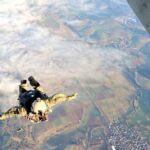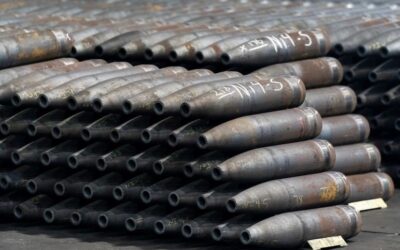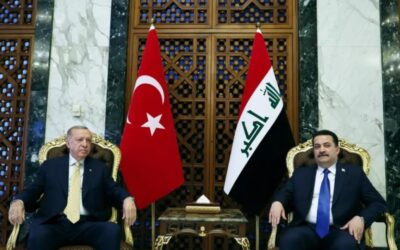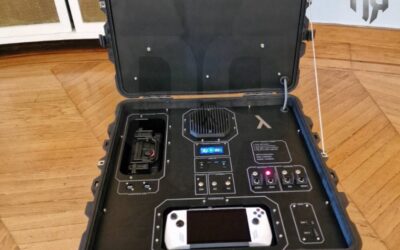In 2023, global military spending set a new record for the ninth consecutive year, according to research by SIPRI, the Stockholm-based…
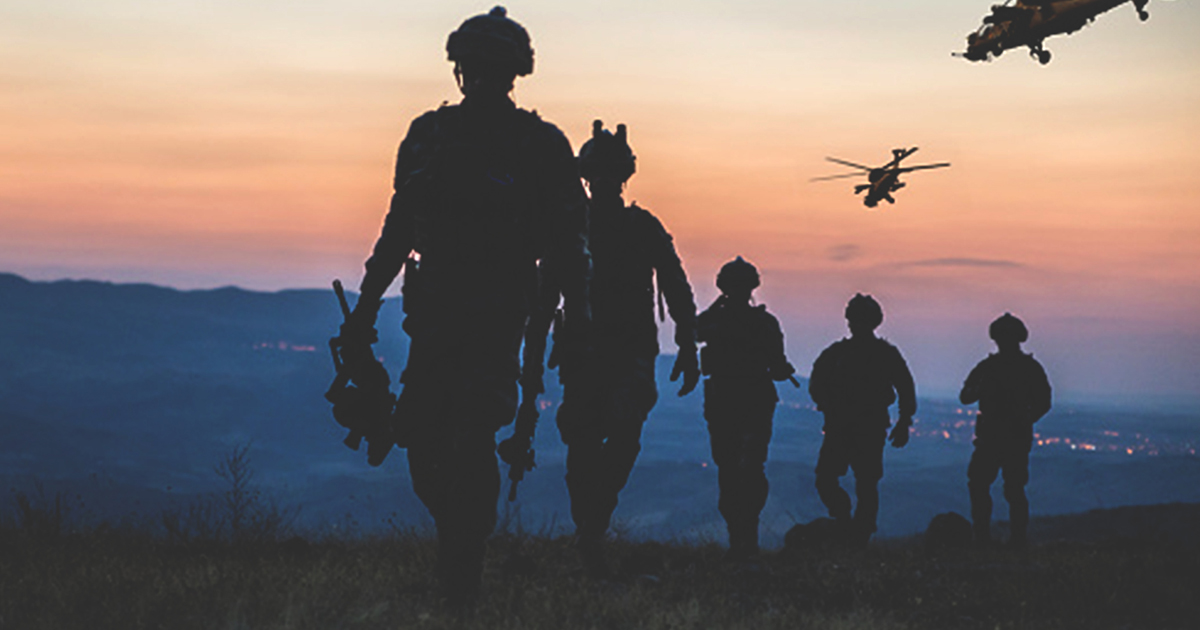
*Athanasios Tsakalos
To date, more than 110 armed conflicts have been reported. Some of these conflicts make headlines, while others don’t. Some of them started recently, while others have lasted for more than 50 years.
However, throughout 2022 DEFENCE ReDEFiNED kept monitoring the global conflict landscape, capturing the dynamics, actors, and agents of conflict as well as the prospects for peace or further escalation.
In an effort to clarify this complex landscape, this article aims to map and cover conflict hotspots in the Americas, Europe and Eurasia, the Middle East and North Africa, sub-Saharan Africa, Asia, and beyond. We have reported similar articles in the past and you can learn more about them here.

First, in February 2022, as the world was still reeling from the devastating “legacy” of the pandemic, Russia’s invasion of Ukraine brought about the most devastating interstate armed conflict since World War II, still affecting the global economy with another major blow to agricultural and energy supply chains. Adding to pre-existing inflationary pressures through its effects on grain, fertilizer, and energy prices, the war also fuelled poverty, inequality, and food insecurity.
Also read: UN | India overtakes China in population – Implications of population explosion
As the following conflict hotspots for 2022 suggest, armed conflict will shroud the world into the new year.
America
Conflict hotspots in the Americas remain grim amid the growing political influence and transnational reach of criminal groups and the growing demand for illegal narcotics.
This creates even more opportunities for criminal groups to establish themselves in local communities by challenging the legitimacy and ability of state institutions to govern.
- Colombia: Colombia has experienced one of the largest armed conflicts in modern times. In particular, the Colombian government is still involved in parallel conflicts with non-state actors against the ELN (Ejército de Liberación Nacional) and FARC-EP (Bloque Oriental / Eastern Bloc) groups.
- Mexico: The Mexican government has been involved in two parallel armed conflicts against the Jalisco Nueva Generación Cartel (CJNG) and the Sinaloa Cartel, including violence between the two cartels.
- In Costa Rica and Panama in Central America, drug seizures are on the rise, while in Ecuador in South America, gang rivalries have led to large-scale massacres in recent years.
Also read: Greece | Accepted as an observer in the SICA Union
Eurasia
The following flare-ups (small or large) in territories under military occupation and frozen conflicts make up the majority of armed conflicts taking place in the Eurasia region.
- Moldova: Russia has held part of the territory of Moldova since 1990 and the collapse of the Soviet Union. The Russian occupation extends to a strip of land on the east bank of the Dniester River in Moldova, known as Transnistria. In fact, Transnistria (Unrecognized as a state internationally) had come back into the forefront due to the Russian-Ukrainian war, and – in particular – its probable merger with the Russian Forces through Ukraine would signal, among others, the complete cut off of Ukraine from the Black Sea and the spread of war in Moldova.
- Georgia: Russia owns the regions of South Ossetia and Abkhazia in Georgia. Separatist movements are active in South Ossetia and Abkhazia. Fourteen years after the Russian-Georgian war, Moscow continues to expand its illegal control over the occupied territories of Georgia by taking a less confrontational approach.
- Ukraine: Between February 2014 and February 2022, there was an international armed conflict between Russia and Ukraine in Crimea and parallel armed conflicts between Ukraine and separatist groups in the east of the country. On February 24, 2022, Russia invaded Ukraine, thus starting a new phase of the conflict.
Also read: Germany | A “Marshall Plan” for Ukraine is underway
However, these non-international armed conflicts in the East turned into international armed conflicts in February 2022, as Russia began to exercise total control over these groups. Russia currently occupies the entire Donbas plus two southern regions, Kherson and Zaporizhia, as well as Crimea with Ukraine fighting back strongly with the help of the US and the EU.
- Nagorno-Karabakh: Clashes occur regularly on the Armenia-Azerbaijan border. In September, fighting between the two countries resulted in the deaths of a total of 286 people on both sides, fuelling fears of a full-scale war like the one that broke out in 2020 with a tragic toll of 6,500 people in 2020.
The conflict is linked to territorial disputes, mainly around Nagorno-Karabakh, a mountainous region inhabited mainly by Armenians, which seceded from Azerbaijan in the early 1990s with the help of Yerevan. A first war had then caused at least 30,000 deaths. After the 2020 war, which ended with a Moscow-sponsored ceasefire agreement, Armenia and Azerbaijan are engaged in difficult negotiations with several parallel initiatives.
Also read: USA – Russia | Nuclear arms control meeting canceled
Balkans
- Bosnia-Herzegovina: Today the country is based on a complex political system that divides the country into two entities. On the one hand, we have the Republika Srpska (Bosnian Serb Republic), where Serbs are the majority, and on the other, the Federation of Bosnia and Herzegovina, mainly made up of Bosniaks and Croats.
The EU is warning that Bosnia and Herzegovina is at imminent risk of war now that the EU Peacekeeping Force (EUFor) mission is set to end. To date, that force has largely ensured the difficult balance in the region.
In a UN report published by The Guardian, Christian Schmidt, High Representative for Bosnia and Herzegovina, said that if Serb separatists carry out their threat and form their own army, thus splitting the Armed Forces in two, additional peacekeeping forces will be needed to ensure that the already tense situation does not escalate.
- Kosovo and Serbia: The two former components of Yugoslavia are on a collision course, following the deterioration of relations between the Serbian community and the Kosovo leadership. The latest developments may, however, affect the situation in the Balkans more broadly, as Kosovo is an existential issue for Belgrade, which could trigger chain reactions in the region.
The reactions of the Serbs of Kosovo intensified, as they are not prepared to accept the authority of a state they consider illegitimate. In Belgrade, the fate of their compatriots in Kosovo is a key issue, since it cannot accept either the independence of Kosovo or the mistreatment of Serbs in the country. Should violence break out in the Kosovo provinces in the meantime, nothing can be ruled out at a time of rapid change on the European continent.
Also read: EU Summit | Western Balkans, Turkey and the “enlarged community” on the agenda
Middle East and North Africa
This is, in numbers, the region hit the hardest: more than 45 armed conflicts, both military occupations of territories and armed conflicts are currently taking place across the Middle East and North Africa in the following areas:
- Cyprus: Turkey – as an occupying power – illegally occupies the northern part of Cyprus. Turkey exercises control both through the presence of its armed forces and through the power it exercises over the self-proclaimed pseudo-state of the Turkish Republic of Northern Cyprus, which is the de facto authority in the region. The Turks continue to create conditions of instability and strengthen their forces.
- Egypt: The Egyptian government is engaged in an armed conflict against Wilayat Sinai, an armed non-state actor that has pledged allegiance to the Islamic State group. In addition, Israel has carried out airstrikes against Wilayat Sinai in Egypt with the consent of the Egyptian government.
- Iraq: Iraq has been involved in an armed conflict against the Islamic State in its territory since January 2014. Iraq is also involved in an international armed conflict with Turkey due to the latter’s use of force against Kurdish fighters in northern Iraq without the consent of Iraq.
- Israel: The occupation of the Golan Heights, the suburbs of Sheba, and the Palestinian territories (West Bank, East Jerusalem, and the Gaza Strip) continues with violent repression. Moreover, armed clashes in Syria against Iranian targets are more than regular, leading to a series of short-lived armed conflicts.
- Libya: Following the fall of the Gaddafi regime in 2011, Libya has been in a state of ongoing political turmoil and associated armed violence. The existence of competing governments and a seemingly ever-changing cast of different armed groups, which often change alliances and appear to operate autonomously, have exacerbated the situation and led to general uncertainty.
Since 2014, there have been overlapping ongoing armed conflicts involving the internationally recognized Government of Libya (GNA), the Libyan National Army (LNA), various armed groups, and intervening foreign forces.
Also read: Israel – UAE | Historic meeting between the two leaders
- Western Sahara: Morocco has been occupying Western Sahara since October 1975.
- Syria: Syria is currently in a series of armed conflicts. First, the Syrian government has engaged in several armed conflicts against a wide range of groups made up of armed groups and organizations. Second, there is an armed conflict between Syria and members of the US-led international coalition, along with Turkey’s military occupation of parts of northern Syria.
- Yemen: There are currently many parallel and overlapping armed conflicts in Yemen, mainly between the anti-Houthi government, Al-Qaeda in the Arabian Peninsula, and the Southern Transitional Council as well as between armed groups. The government is supported by an international coalition led by Saudi Arabia (mainly against Iran).
- Turkey: Turkey is involved in an armed conflict on its territory against the Kurdistan Workers’ Party, which extends to Iraq and Syria through the occupation of these territories, while it illegally occupies the Northern part of the Republic of Cyprus.
- Iran: Iran’s nuclear ambitions have been a focus of international diplomacy for decades. Faced with accusations of pursuing nuclear weapons in violation of commitments, Iran signed an agreement in 2015, the JCPOA, to curb its nuclear program. However, the US withdrawal from the deal in 2018 and subsequent Iranian violations by breaching further enrichment limits cast doubt on the deal’s future.
At the same time, from Lebanon and Syria to Iraq, Palestine, and Yemen, Iran finances, equips, and trains militias and groups to achieve its political goals (Shia Crescent) while deeply involved in various war activities.
Also read: Alexandros Drivas | US participation in the Greece-Cyprus-Israel tripartite scheme (3 + 1)
Africa
Africa ranks second in the number of armed conflicts by region with more than 35 armed conflicts due to overlapping local insurgencies, lasting lack of governance, and transnational jihadism taking place in:
- Burkina Faso: Burkina Faso is involved in parallel armed conflicts against some jihadist groups, notably Ansaroul Islam, Islamic State in West Africa Province (ISWAP), Islamic State in the Greater Sahara (ISGS), and Group for the Support of Islam and Muslims (JNIM).
- Cameroon: Cameroon is involved in parallel armed conflicts against Boko Haram in the Far North and some English-speaking separatist groups, which are fighting against the government for the independence of the region in the North-West and South-West regions.
- Central African Republic: The Central African Republic is involved in a number of armed conflicts against a wide range of rebel groups, notably the ex-Séléka and anti-Balaka.
- Democratic Republic of the Congo: The Democratic Republic of the Congo has been involved in several armed conflicts on its territory against a number of non-state armed groups, mainly the Allied Democratic Forces (ADF), Mai-Mai Yakutumba, Democratic Forces for the Liberation of Rwanda (FDLR) and Cooperative for Development of the Congo (CODECO).
- Ethiopia: Ethiopia is involved in two parallel armed conflicts against the Tigray People’s Liberation Front (TPLF) and Oromo Liberation Army (OLA).
Also read: First US air strike on Somalia against al-Qaeda under Biden administration
- Mali: Mali is engaged in parallel armed conflicts against various rebel groups, most notably Jama’at Nusrat al-Islam wal-Muslimin (JNIM ) and the Islamic State in the Greater Sahara (ISGS).
- Mozambique: Mozambique is involved in parallel armed conflicts against respective RENAMO (Mozambican National Resistance) political party splinter groups, such as the RENAMO Military Junta and the so-called Al-Shabab group.
- Nigeria: Nigeria is involved in two parallel armed conflicts against the non-state armed groups Boko Haram and the Islamic State in West Africa Province (ISWAP).
- Senegal: The Senegalese government is involved in an armed conflict in Casamance, the southwestern tip of Senegal, with the Mouvement des Forces Démocratiques de la Casamance (MFDC), a non-state armed group.
- Somalia: The government of Somalia is involved in an armed conflict on its soil against al-Shabaab, which has pledged allegiance to al-Qaeda. Also, piracy is rampant.
- South Sudan: Since December 2013, South Sudan and its armed forces have been involved in an armed conflict with dissident armed forces.
- Sudan: The Government of Sudan is involved in separate armed conflicts against a number of non-state armed groups, notably the Justice and Equality Movement (JEM) and the Sudan Liberation Movement/Army–Abdel Wahid, and at least two factions of the Sudan People’s Liberation Movement/Army –North (SPLM-North).
Sudan has also been involved in deadly border clashes in the al-Fashaga Triangle in June 2022 with Ethiopia in a dispute that intersects with the issue of the Grand Ethiopian Renaissance Dam, a conflict that also involves Egypt.
- Rwanda: Tensions between the Democratic Republic of Congo and Rwanda have also increased due to the presence of non-state armed groups in border areas.
- A spill-over effect from the Sahel to some of the West African coastal countries was evident during the reporting period, with attacks in Benin, Cote d’Ivoire, and Togo.
Also read: Mozambique | Islamic State takes over Palma – Thousands missing, displaced and dead – VIDEO
Asia
- India: India is involved in parallel armed conflicts against the Communist Party of India – Maoist (also often referred to as Naxalites) as well as separatist groups in Indian-administered Jammu and Kashmir (J&K).
India and China are involved in a protracted armed conflict over the control of two main areas, namely Aksai Chin and Arunachal Pradesh, and some smaller areas along the Sino-Indian border.
India and Pakistan are involved in a prolonged armed conflict over the status of Kashmir.
- Afghanistan: In August 2021, following the withdrawal of US troops from Afghanistan, the Taliban quickly took control of most of the country, including Kabul, and became the effective government of Afghanistan. Consequently, the Taliban government is currently involved in parallel armed conflicts with the Islamic State Khorasan Province (IS-KP) and the National Resistance Front, Afghanistan Resistance Front, and High Council for Resistance movements.
- Myanmar: Insurgencies have been ongoing in Myanmar since 1948. The conflict is largely ethnically based, with several ethnic armed groups fighting the Myanmar armed forces for self-determination. The conflict arises mainly from the religious and social differentiation between the Buddhist Rakhine and the Muslim Rohingya. The latest episode in this ever-simmering conflict is the February 1, 2021 coup, when Myanmar’s military seized power while the democratically elected government was arrested and detained.
- Pakistan: The government of Pakistan has been involved in armed conflicts with various armed groups operating throughout its territory, particularly with groups linked to the Taliban in the Federally Administered Tribal Areas and with independence fighters in Balochistan and rivalry with India for Kashmir.
- Philippines: The Philippine government is involved in multiple armed conflicts against the Moro National Liberation Front, Moro Islamic Liberation Front, Bangsamoro Islamic Freedom Fighters, Maute Group, Abu Sayyaf Group, and New People’s Army.
- Taiwan: The escalation of tensions between the US and China over Taiwan is also a major risk to global security.
- North Korea: The North Korean nuclear issue is one of those perennial problems.
Also read: Afghanistan | Taliban in Kabul – UN is convened
Emerging hotspots of conflict
- Space: In recent years, states have begun to “sharpen their swords” for space. For now, we see nations testing their space technology. There has never been an armed conflict in space, but it is potentially the next arena for battle.
- The Arctic: Due to changing geopolitical pressures, the desecuratization of the Arctic, a region rich in energy resources and a potential sea route, in the late 1980s was not successful. This failure answers why today the Arctic appears to be “warming” faster than ever.
While states such as Russia and the United States have begun a militarization and possible nuclearization of the Arctic, other Arctic states such as Canada and Norway have mobilized for cooperative initiatives there.
Hope for a better future?
One hundred million people were forced to flee their homes in 2022. The 100 million figure, which includes those fleeing conflict, violence, human rights abuses, and persecution, was announced by the United Nations High Commissioner for Refugees (UNHCR) and described by the head of the service as “a record that should never have been broken”.
The number is increased compared to some 90 million in 2021. Outbreaks of violence or prolonged conflicts have been key immigration drivers in many parts of the world. Thousands of desperate immigrants looked to the West as their preferred destination, placing their lives in the hands of human traffickers and embarking on perilous voyages across the seas, many of which ended in tragedy.
In anticipation of a better tomorrow, we all wish to have much less to write about in our article reviewing armed conflicts at the end of 2023.
READ MORE
Iraq – Turkey | Sign more than 20 agreements
Turkish President, Recep Tayyip Erdogan, met with his Iraqi counterpart, Abdul Latif Rashid, in Baghdad on the occasion of his official…
Iraq | Εxplosion at military base south of Baghdad
A major explosion at a command post of the Iraqi Army took place today Saturday about 50 kilometers south of Baghdad…
SIPRI | New record in global military spending
In 2023, global military spending set a new record for the ninth consecutive year, according to research by SIPRI, the Stockholm-based…
Iraq – Turkey | Sign more than 20 agreements
Turkish President, Recep Tayyip Erdogan, met with his Iraqi counterpart, Abdul Latif Rashid, in Baghdad on the occasion of his official…
Lambda (λ) Automata | Autonomous surveillance solutions at “Investing in Deep Tech: Dual-Use Technologies” conference
The recent presentation of the start-up company Lambda Automata at the “Investing in Deep Tech: Dual-Use Technologies” conference…
VELOS ROTORS | Velos V3 UAS introduced as ideal example of dual-use systems
The “Investing in Deep Tech: Dual-Use Technologies” conference held at the Hellenic Armed Forces Officers’ Club in…
OCCAR | Additional Night Vision Goggles
The Director of the Organisation for Joint Armament Cooperation (OCCAR), Mr. Joachim Sucker, has signed a third amendment to…
Iraq | Εxplosion at military base south of Baghdad
A major explosion at a command post of the Iraqi Army took place today Saturday about 50 kilometers south of Baghdad…












